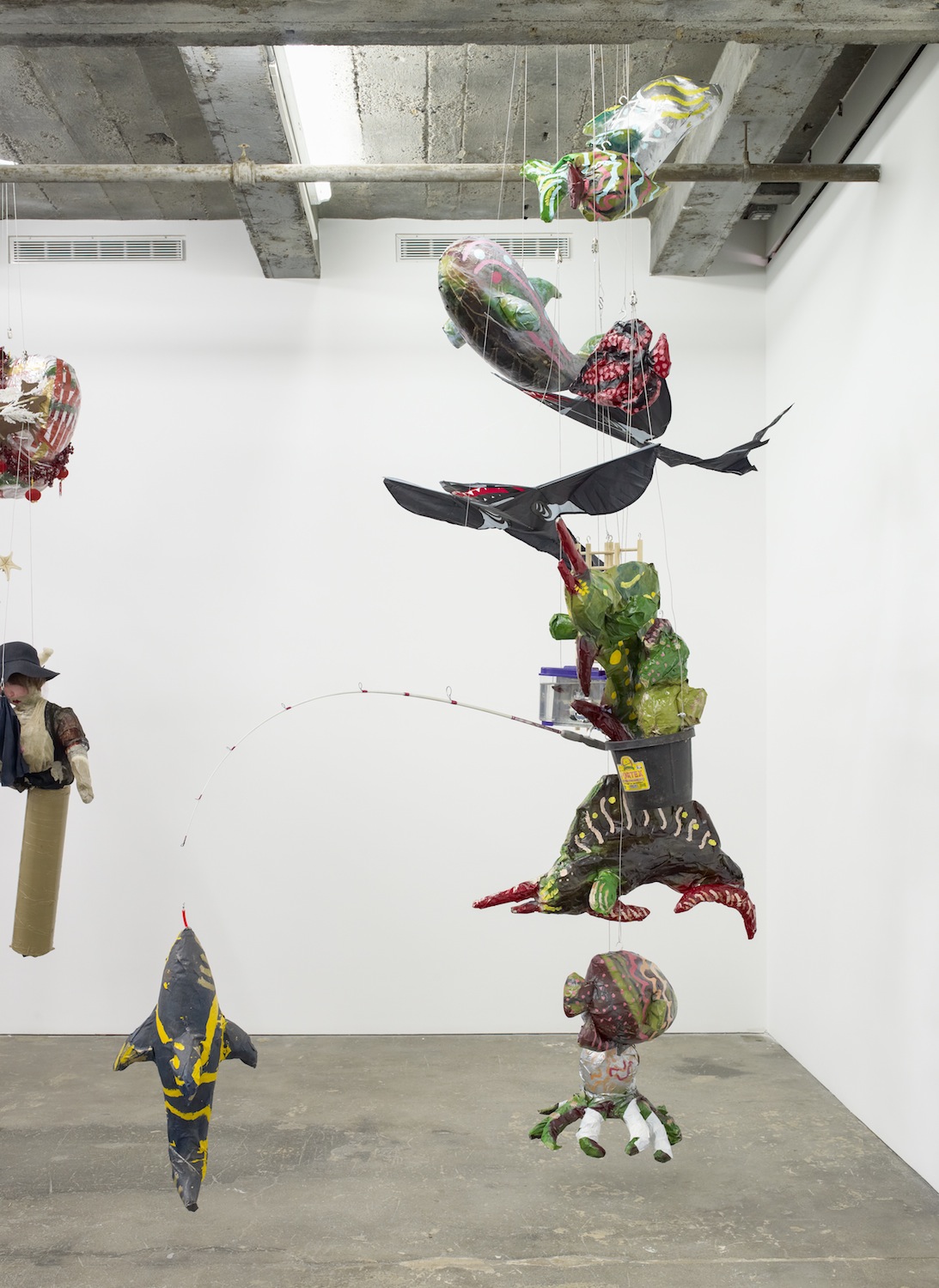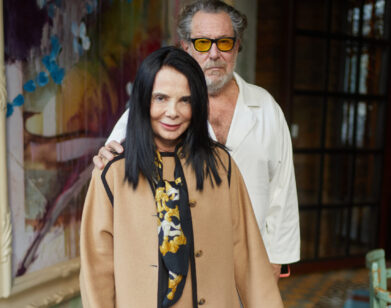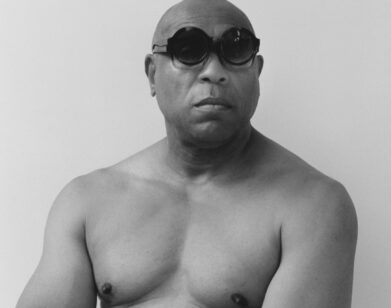Hanging Out With Agathe Snow
Agathe Snow conceived of the ten sculptures in “I like it here. Don’t you?,” currently on view at New York’s Maccarone gallery, while lying on the floor with her baby, waiting for him to go to sleep. “I saw works that would center around themselves, and stretch from both the ceiling and the ground,” she told Interview. Inspired by the constructions of pre-cinematic devices such as the thaumatrope, in which movement is distilled into a single image, Snow suspended the sculptures in the air, thereby allowing their disparate components to tell the same story from many different angles.
In a brisk three weeks of preparation, Snow took apart earlier sculptures, combining their materials with toys (many of them inflatable) like plush hearts, a blow-up giraffe, a Santa Claus mannequin, a wooden gun, and a live fish suspended in a tiny plastic tank. Larger than the human body, but yet surprisingly ethereal, the resulting pieces look like mobiles from a surreal childhood dream.
“I’ve had to rethink myself as a person and an artist ever since I became a mom, especially in regards to my presence in time and space,” Snow explained. “I used to not want to make things that would last forever and ever, and take up space. I liked the idea of recuperating. But now, I want to make things that are more structurally sound, that have a protective shell and can be adjustable to any environment where they are hung.”
In the sense that they are maximalist works comprised of varied but allegorical materials—in Sweepstakes (2012), a paper tube outfitted with a Mary Poppins mask hangs alongside the Santa Claus mannequin descending a chimney—the sculptures in the exhibition are clearly visual descendants of Snow’s earlier work. These include The Whale, as 2007 papier-mâché sculpture shown at New York’s James Fuentes, in which Snow created the skeleton of a baby whale—modeled on the carcass of an actual creature that came aground in the Gowanus Canal—out of materials culled from trash she collected on the street. In those works, black and claustrophobic, there was a sense of darkness, a feeling that apocalypse might be around the corner, if it hadn’t already arrived.
The latest works don’t lack Snow’s characteristic references to war, sexuality, and corruption, but convey a sense that there may be calm after the storm, at least for Snow. They are vessels for expressing her current state of purgatory, which she describes as, “A place on earth between places, but nevertheless a happy place by very existence of its being.”
Famously married to (and divorced from) the now deceased Dash Snow, Agathe has seen her fair share of tumult. “I have survived many I loved, and I am very happy to be here, and to be alive, and creative,” she said. “I find myself to be in a state of grace. I feel like I’ve been given another chance.”







